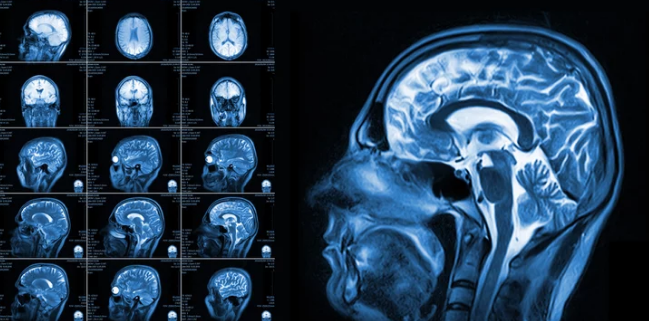Liver cancer is a serious and often life-threatening disease, but early detection and accurate diagnosis can make a significant difference in treatment outcomes. Among the different imaging technologies available, Magnetic Resonance Imaging (MRI) has proven to be one of the most powerful tools for evaluating liver health and identifying cancer.
In this article, we’ll explore how MRI works in diagnosing and monitoring liver cancer, why it is considered superior in certain cases, and what patients should know before undergoing the procedure.
Understanding Liver Cancer
Liver cancer can take different forms, the most common being:
- Hepatocellular carcinoma (HCC): The most frequent type, often linked to chronic liver disease or cirrhosis.
- Cholangiocarcinoma: Cancer that begins in the bile ducts inside the liver.
- Secondary liver cancer (liver metastases): When cancer from another part of the body spreads to the liver.
Accurate imaging is essential for detecting these tumors early, planning treatment, and monitoring response.
Why MRI Is Important in Liver Cancer Diagnosis
MRI uses powerful magnetic fields, radio waves, and computer technology to create highly detailed images of soft tissues. For liver cancer, MRI has several unique advantages:
- Superior soft tissue contrast compared to CT scans and ultrasound
- Ability to detect small lesions that other imaging might miss
- No radiation exposure, making it safer for repeated use
- Functional imaging capabilities (showing blood flow, tissue structure, and cellular activity)
- Accurate tumor characterization, helping distinguish benign (non-cancerous) from malignant (cancerous) growths
How Liver MRI Works
A liver MRI is typically performed with the use of a contrast dye (gadolinium-based agents). These dyes are absorbed differently by healthy and cancerous tissue, allowing radiologists to see clear distinctions.
Key MRI Techniques for Liver Cancer
- Dynamic Contrast-Enhanced MRI (DCE-MRI):
Captures images during different phases of contrast absorption, showing how blood flows in and out of the liver and tumors. - Diffusion-Weighted Imaging (DWI):
Detects how water molecules move inside tissues. Restricted movement may indicate cancer. - MR Spectroscopy:
Provides chemical information that can help differentiate tumor types. - Hepatobiliary Contrast Agents:
Specialized dyes that target liver cells, improving the accuracy of cancer detection.
MRI vs. Other Imaging Methods for Liver Cancer
| Feature | MRI | CT Scan | Ultrasound |
|---|---|---|---|
| Radiation | None | Yes | None |
| Soft Tissue Detail | Excellent | Good | Moderate |
| Tumor Detection | Highly sensitive, especially for small lesions | Good, but may miss tiny tumors | Often used for initial screening |
| Contrast Use | Gadolinium-based | Iodine-based | Sometimes with Doppler |
| Best For | Small tumors, tumor characterization, treatment monitoring | General detection, staging | Quick and cost-effective initial check |
MRI is often considered the gold standard when precise tumor details are needed.
When Doctors Recommend MRI for Liver Cancer
Your doctor may suggest a liver MRI if:
- You are at high risk (chronic hepatitis, cirrhosis, heavy alcohol use, or genetic conditions).
- A suspicious mass was found on ultrasound or CT.
- There’s a need to distinguish between benign and malignant lesions.
- Doctors want to monitor treatment progress, such as after surgery, ablation, or chemotherapy.
- To check for recurrence or metastasis after treatment.
What to Expect During a Liver MRI
- Preparation – You may be asked to avoid food for a few hours before the scan. Metal objects must be removed.
- Contrast Injection – A gadolinium-based dye may be given through an IV.
- Positioning – You’ll lie on your back on a sliding table that enters the MRI machine.
- The Scan – The machine makes loud knocking sounds, but earplugs or headphones are provided. You’ll need to remain very still.
- Duration – The test usually takes 30–60 minutes.
- Post-Procedure – You can resume normal activities right away unless sedated.
Benefits of MRI in Liver Cancer Care
- Detects liver tumors at earlier stages
- Differentiates between benign nodules and cancer
- Provides accurate staging, which is critical for treatment planning
- Helps surgeons and oncologists choose the best therapy
- Tracks how well treatment is working
- Reduces unnecessary biopsies
Limitations of MRI
- Higher cost compared to ultrasound or CT
- Not available everywhere, especially in resource-limited areas
- Contrast risks for people with kidney problems or allergies
- False positives, where non-cancerous abnormalities appear suspicious
- Claustrophobia – some patients feel anxious inside the scanner
Despite these limitations, MRI remains one of the most reliable tools for liver cancer diagnosis and monitoring.
The Future of MRI in Liver Cancer Detection
Emerging innovations are making liver MRI even more powerful:
- AI-assisted image interpretation to reduce errors
- Faster scan protocols, making imaging more patient-friendly
- Quantitative imaging biomarkers that can predict tumor aggressiveness
- Combined PET/MRI scans, offering metabolic and anatomical detail together
These advances may allow earlier detection and more personalized treatment in the future.
Conclusion
MRI has become a cornerstone in the fight against liver cancer. Its ability to detect small tumors, provide detailed tissue information, and guide treatment decisions makes it one of the most valuable imaging tools available today.
If your doctor recommends an MRI for liver cancer screening, diagnosis, or monitoring, it’s because this technology offers the clearest and most accurate picture of your liver health—information that can save lives.
Also Read :
